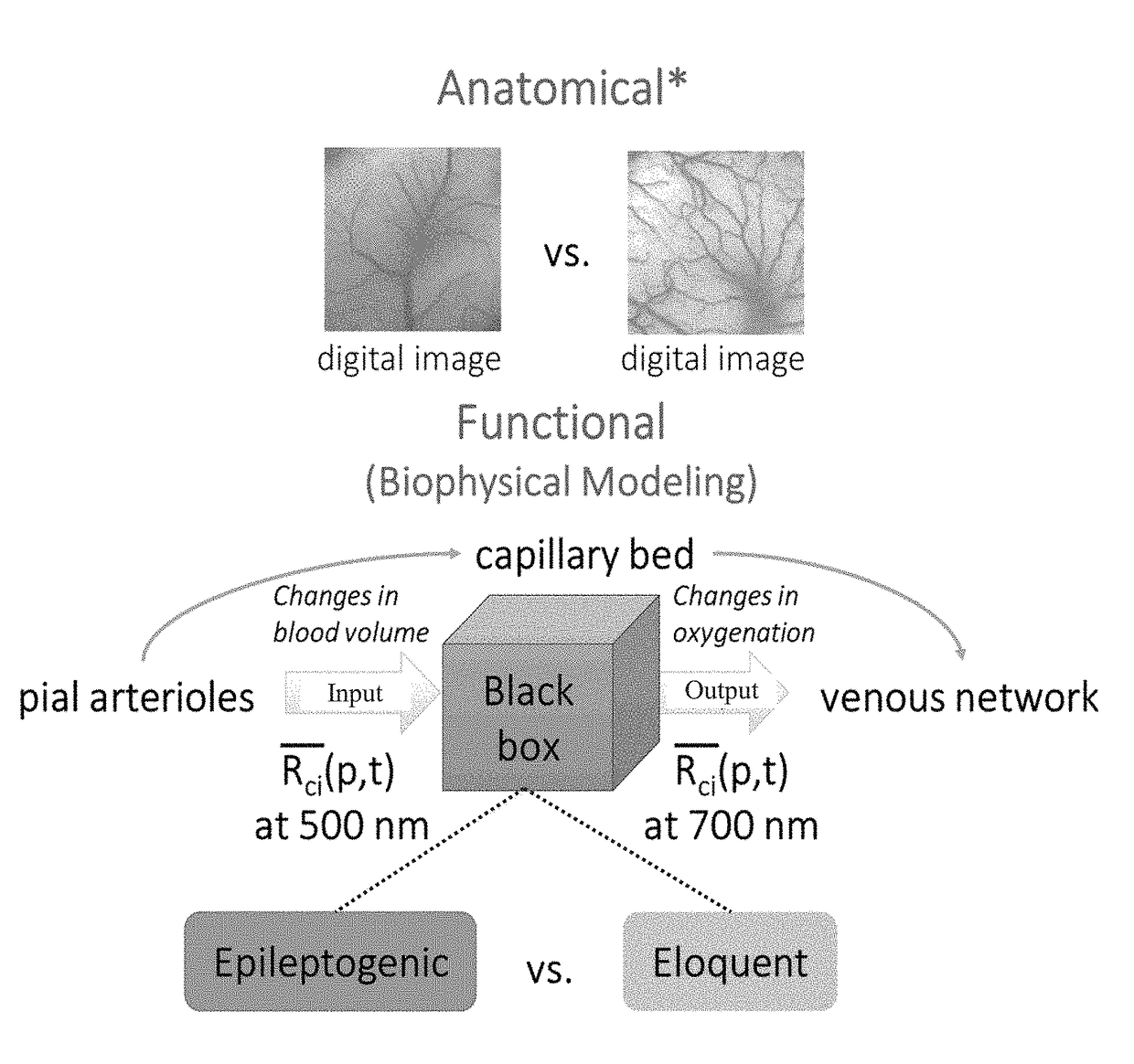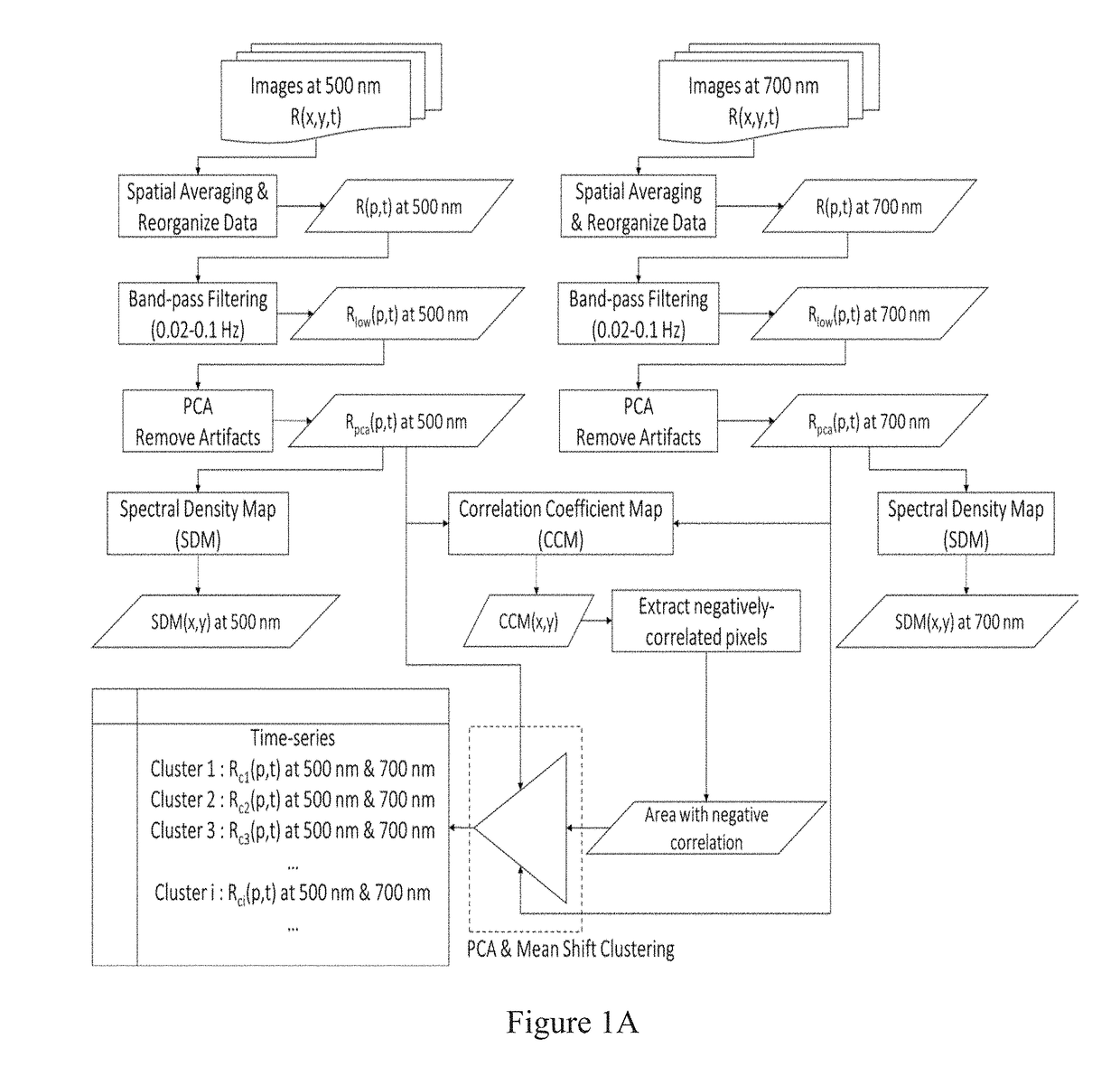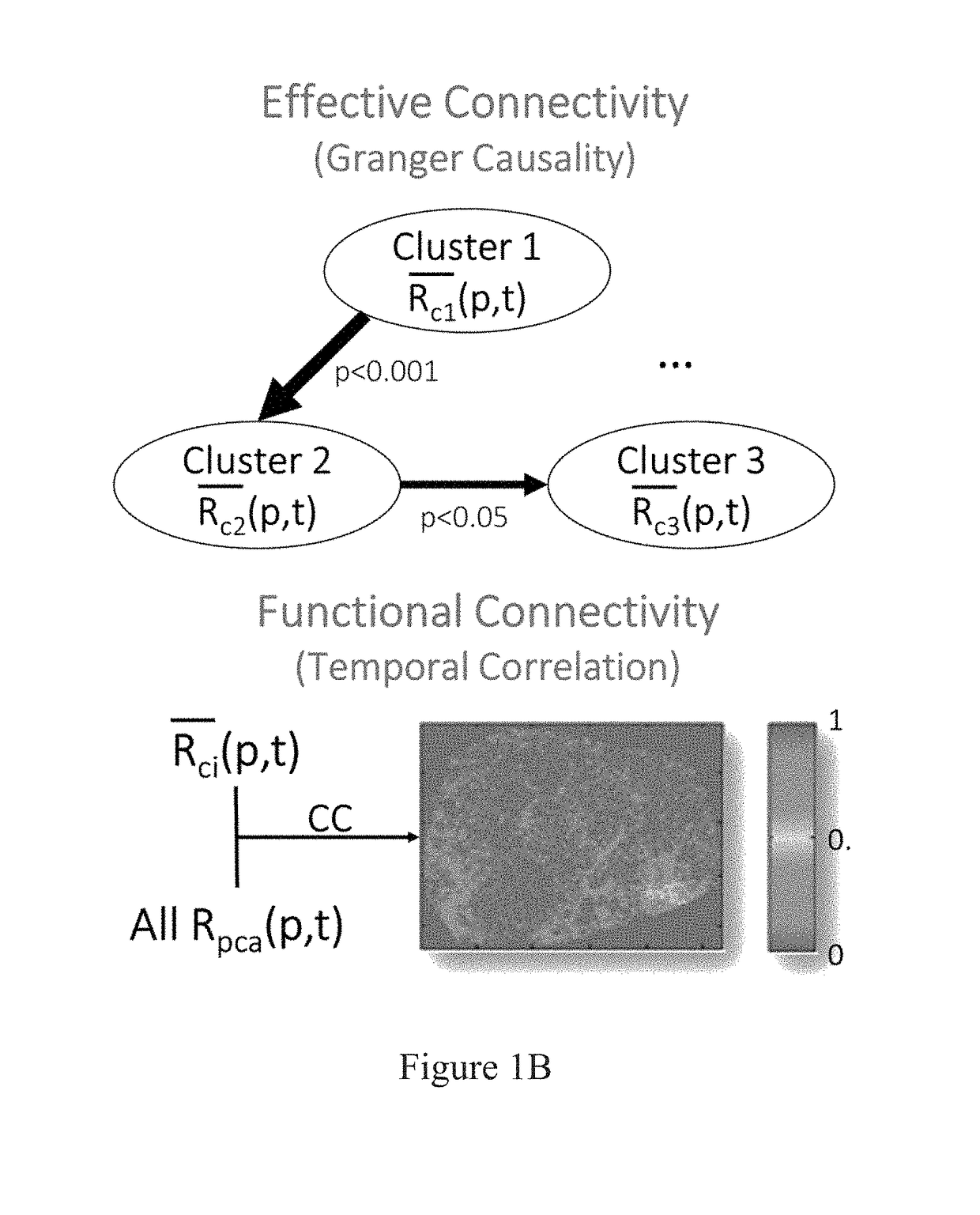Hybrid spectroscopy imaging system for intraoperative epileptic cortex detection
a technology of epileptic cortex and hybrid spectroscopy, which is applied in the field of hybrid spectroscopy imaging system for intraoperative epileptic cortex detection, can solve the problems of affecting requiring an extremely high standard of infrastructure and maintenance, and reducing the use of information provided by these non-invasive techniques. the effect of improving the outcome of epilepsy surgery
- Summary
- Abstract
- Description
- Claims
- Application Information
AI Technical Summary
Benefits of technology
Problems solved by technology
Method used
Image
Examples
example 1
[0075]A study was performed to verify the theories and techniques that are applied in embodiments of the present invention. The study was conducted with data acquired from eleven pediatric patients that underwent epilepsy surgery for focal epilepsy. During each DIOSI study, the patient was kept still and his or her physiological condition was kept stable under normal anesthesia.
[0076]Images at 500 nm and 700 nm were acquired simultaneously and continuously from the exposed cortical surface intraoperatively using a dynamic intrinsic optical signal imaging (DIOSI) system. The exposed cortex was illuminated by surgical light in the operating room and imaged through a NIKON™ dSLR lens (NIKON™ AF 28-80 mm f / 3.5-5.6 D Lens with Aperture Ring). Images were re-collimated and then split into two branches using a dichroic mirror (#49-471, EDMUND OPTICS™) with a transmission wavelength range of 400-595 nm and a reflection wavelength range of 640-750 nm. Two CCD cameras (DMK 21AU04, THE IMAGING...
PUM
 Login to View More
Login to View More Abstract
Description
Claims
Application Information
 Login to View More
Login to View More - R&D
- Intellectual Property
- Life Sciences
- Materials
- Tech Scout
- Unparalleled Data Quality
- Higher Quality Content
- 60% Fewer Hallucinations
Browse by: Latest US Patents, China's latest patents, Technical Efficacy Thesaurus, Application Domain, Technology Topic, Popular Technical Reports.
© 2025 PatSnap. All rights reserved.Legal|Privacy policy|Modern Slavery Act Transparency Statement|Sitemap|About US| Contact US: help@patsnap.com



